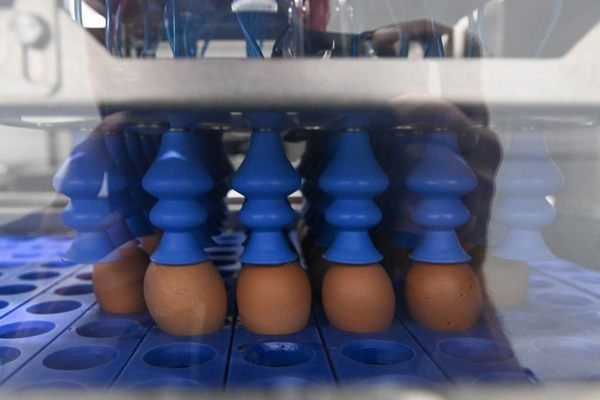Tool-Wielding Crows Rustle Up the Most Snacks
The utensils are useful, but it’s still unclear exactly how the corvids learn to make them.

Before tucking in for lunch, the New Caledonian crow has a lot of work to do. Gripping a twig in its feet, it gets down to business, nibbling and peeling the bark and using its beak to crook the wood into a hook.
Researchers have long known that the ink-colored corvids, which live on an island off the coast of Australia, fashion these implements to rustle up grubs and other insects. Plenty of animals conscript raw materials as tools—elephants use branches to shoo flies, for instance, and otters clutch rocks to crack open shellfish. It’s much more unusual for animals to manufacture tools from scratch.
Nearly two decades ago, a captive crow named Betty enthralled researchers when she transfigured snippets of wire to fish a food-stuffed bucket from a tube. After documenting similar maneuvers in the wild, researchers concluded that tool bending is a part of the birds’ “natural behavioral repertoire.” The crows even hang on to the fruits of their cognitive and problem-solving labor, carrying the utensils with them for future use.

What has been less clear, though, is the particular advantage the crows gain from all of this work. “It’s a painstaking sequence of behaviors,” said James St. Clair, from the Centre for Biological Diversity at University of St. Andrews. Speedier solutions might include spearing something with a stick that’s plain and pointy—or just diving in, beak-first. What was the payoff for the investment?
St. Clair and his collaborators recently put this question to the test. They timed two groups of wild crows retrieving spiders and meat from holes. One avian cohort could make tools, and the other was limited to regular old twigs. The crows with hooks nabbed their bait much more swiftly—sometimes collecting their snack ten times faster than the slowpokes with the straight sticks. (In other recent research, the same team found that tools with deep hooks appear to be the most helpful wranglers.)
Researchers aren’t yet sure whether the crows’ behavior is learned or hardwired, project leader Christian Rutz, a behavioral ecologist, explained to the Los Angeles Times. It’s also too soon to tell whether clusters on one corner of the island tackle the problem differently. For now, we just know that they’re consummately industrious snackers.
























Follow us on Twitter to get the latest on the world's hidden wonders.
Like us on Facebook to get the latest on the world's hidden wonders.
Follow us on Twitter Like us on Facebook